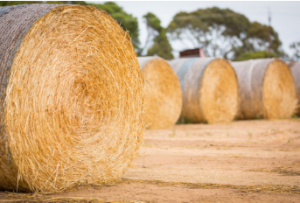Baling twine is a necessary part of the haymaking process. This twine is twisted into a rope of a specific length and diameter. The number of twists per meter varies with the type of baling twine. It is then packaged in coils and palletised for commercialisation. There are several manufacturers of baling twine, and one of the most renowned is Reyenvas of Spain, which is part of the Armando Alvarez Group. Besides its quality, leading baling machinery manufacturers approve this Spanish company’s twine.
 If duct tape has limits, https://unipak.com.au/baling-twine/ baling twine has no bounds. Available in many colours, including orange, black, and natural, baling twine is just as versatile as duct tape and can be used in countless ways, from utilitarian to creative. Learn how to use baling twine to make your life easier. And if you’re still not convinced, check out our duct tape alternatives. You’ll be surprised!
If duct tape has limits, https://unipak.com.au/baling-twine/ baling twine has no bounds. Available in many colours, including orange, black, and natural, baling twine is just as versatile as duct tape and can be used in countless ways, from utilitarian to creative. Learn how to use baling twine to make your life easier. And if you’re still not convinced, check out our duct tape alternatives. You’ll be surprised!
Sisal twine
In many areas, farmers are using sisal twine for baling. This natural twine is renewable, pest-resistant, and uniform in strength. It also possesses 290 lb of tensile strength. Although sisal twine is environmentally friendly, some farmers are worried about its rot-causing potential. Therefore, they may want to choose twine with a higher knot strength. However, these concerns have been resolved thanks to technological advancements.
Aside from its biodegradability, sisal twine is available in various colours and sizes, making it perfect for use in the baling process. Moreover, it has impressive tensile strength and can be made into a large square or high-density fibre twine. It is easily recyclable and can be used to create several types of bales at a time.
Polypropylene twine
When you bale crops or grains, you may be surprised to learn that the twine used in baling is polypropylene. While many twines are made from natural rubber, polypropylene is more durable. Polypropylene is also resistant to UV rays and features a consistent thickness. Here are some benefits of using polypropylene twine for baling crops. In addition, this twine is available in several diameters and weights, making it easy to choose the suitable bale for your needs.
To determine the strength of the polypropylene baling twine, you should first calculate the force required to break the twine. Typically, baling twines should be able to handle a minimum of 200 pounds. Additionally, the knot strength should withstand a minimum of 0.7 pounds per inch. These tests are done using ASTM method D1380-62T, and an Instron apparatus is used to measure the tension.
Reyenvas baling twine
Reyenvas baling twine has several benefits that make it the best choice for your baling needs. Made from UV-protected virgin plastic resin, Reyenvas baling twine is resistant to abrasion, snags, and knot slippage and comes in various colours. It also has a durable construction that prevents knot slippage, which is crucial for achieving uniform weight. Moreover, it is much cheaper than other brands of twine.
Reyenvas baling twine from https://unipak.com.au/baling-twine/ is available at various price points. Depending on your baler, you can use cotton yarn or jute twine. But no matter which type you need, you can rest assured that you won’t run out of options. Just make sure to ask for recommendations from a professional. Reyenvas baling twine has excellent user reviews and is backed by the Armando Alvarez Group.
Net wrap
Using https://unipak.com.au/baling-twine/ net wrap for baling is recommended to minimise dry matter loss in the hay. The twine itself tends to deteriorate, and dry matter loss is partially physical and partially due to microbial activity. In addition, during outdoor storage, the bales are exposed to rainwater. The rainwater removes nutrients from the bale. Although net wrap is more efficient at shedding moisture and keeping the dry matter out, it is still necessary to store the bales on a well-drained surface. If the bales are left outside, they will still lose a higher percentage of their dry matter.
